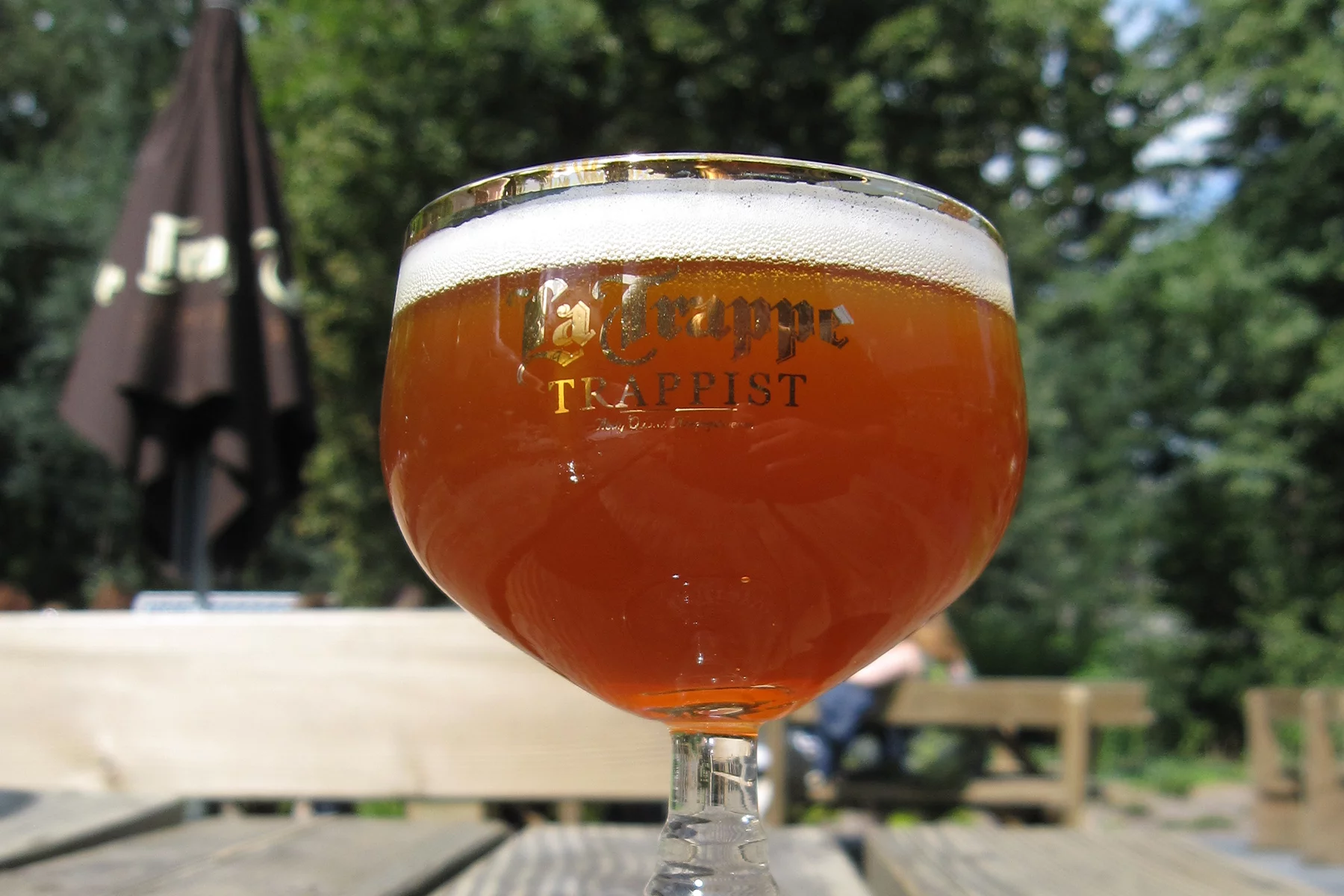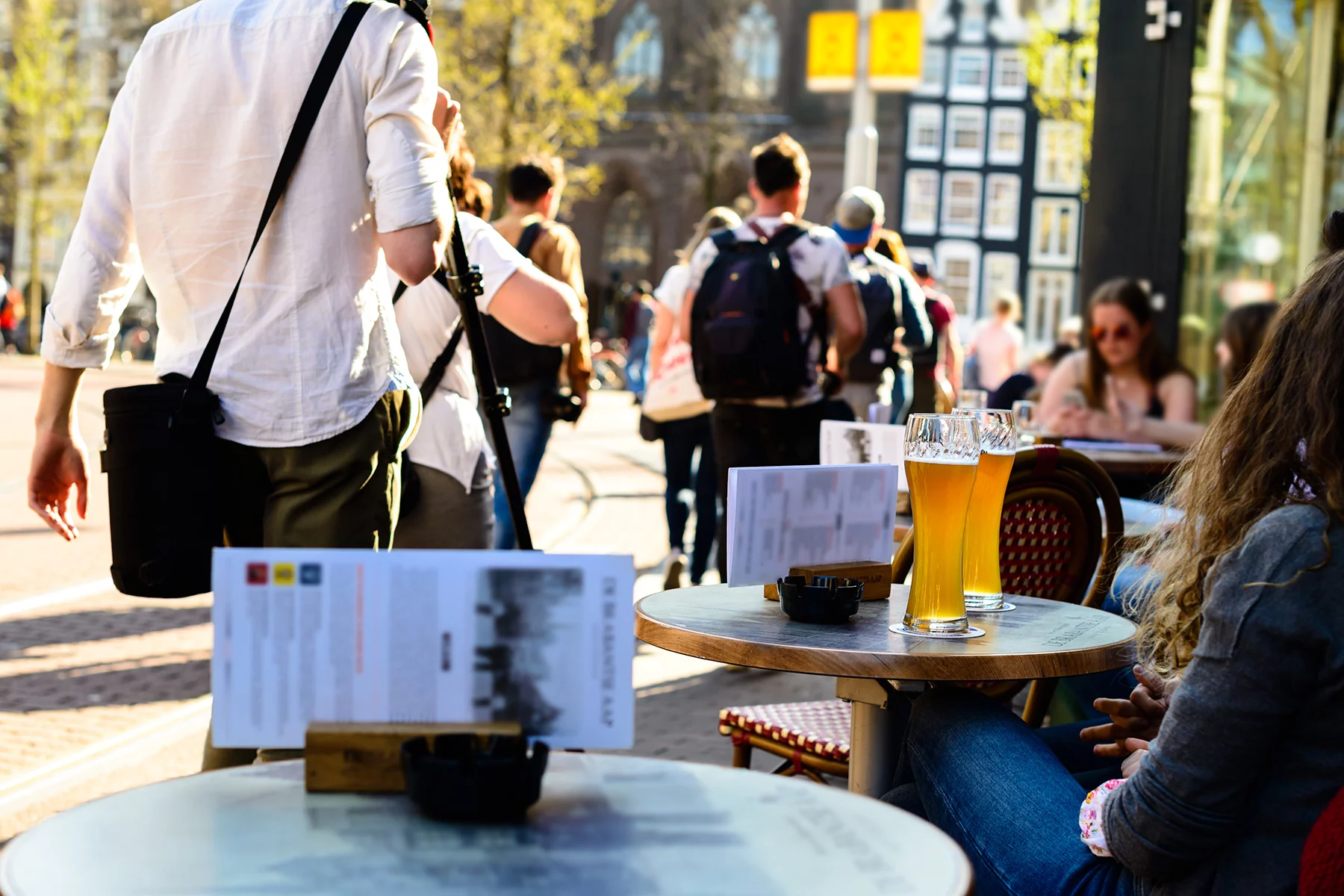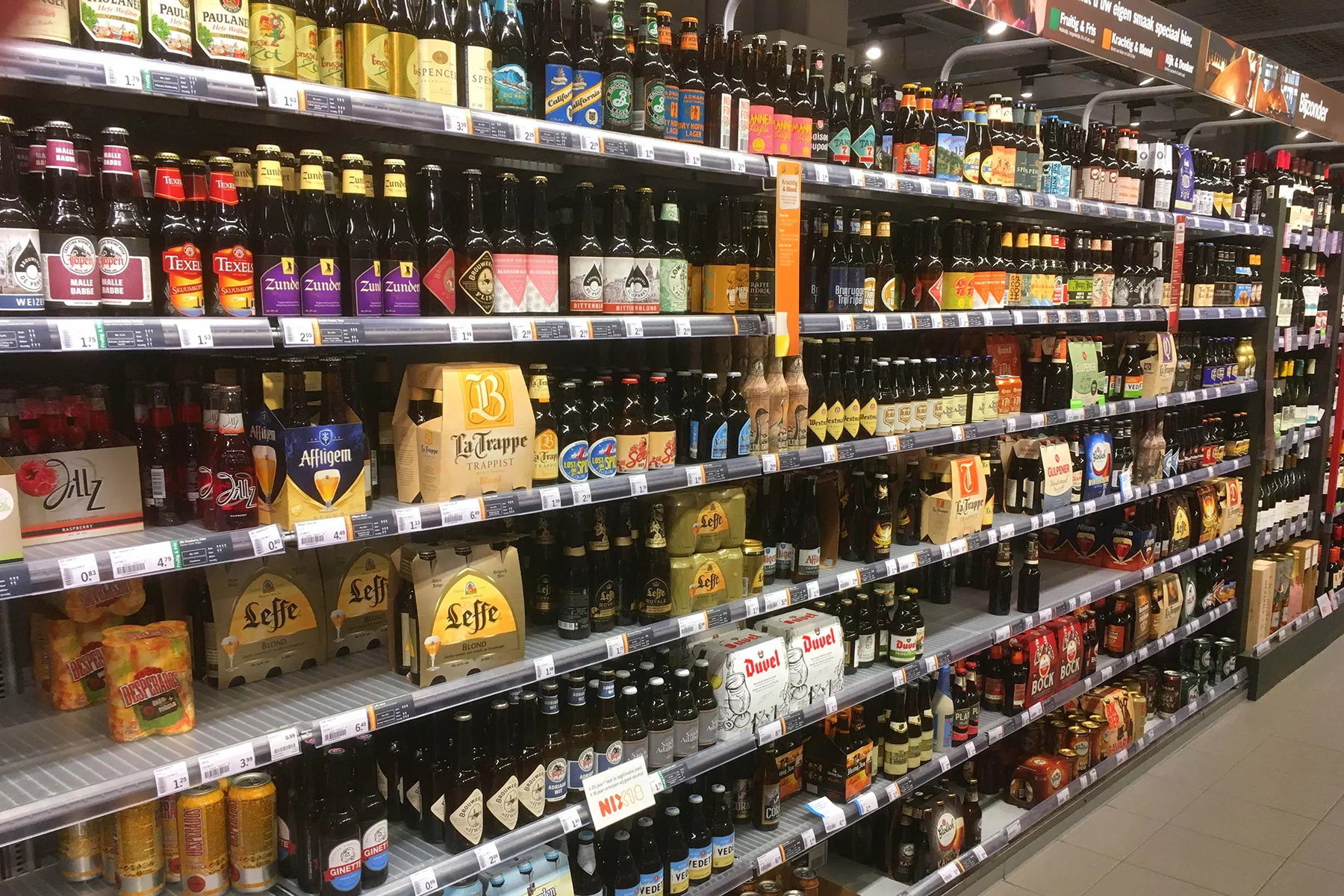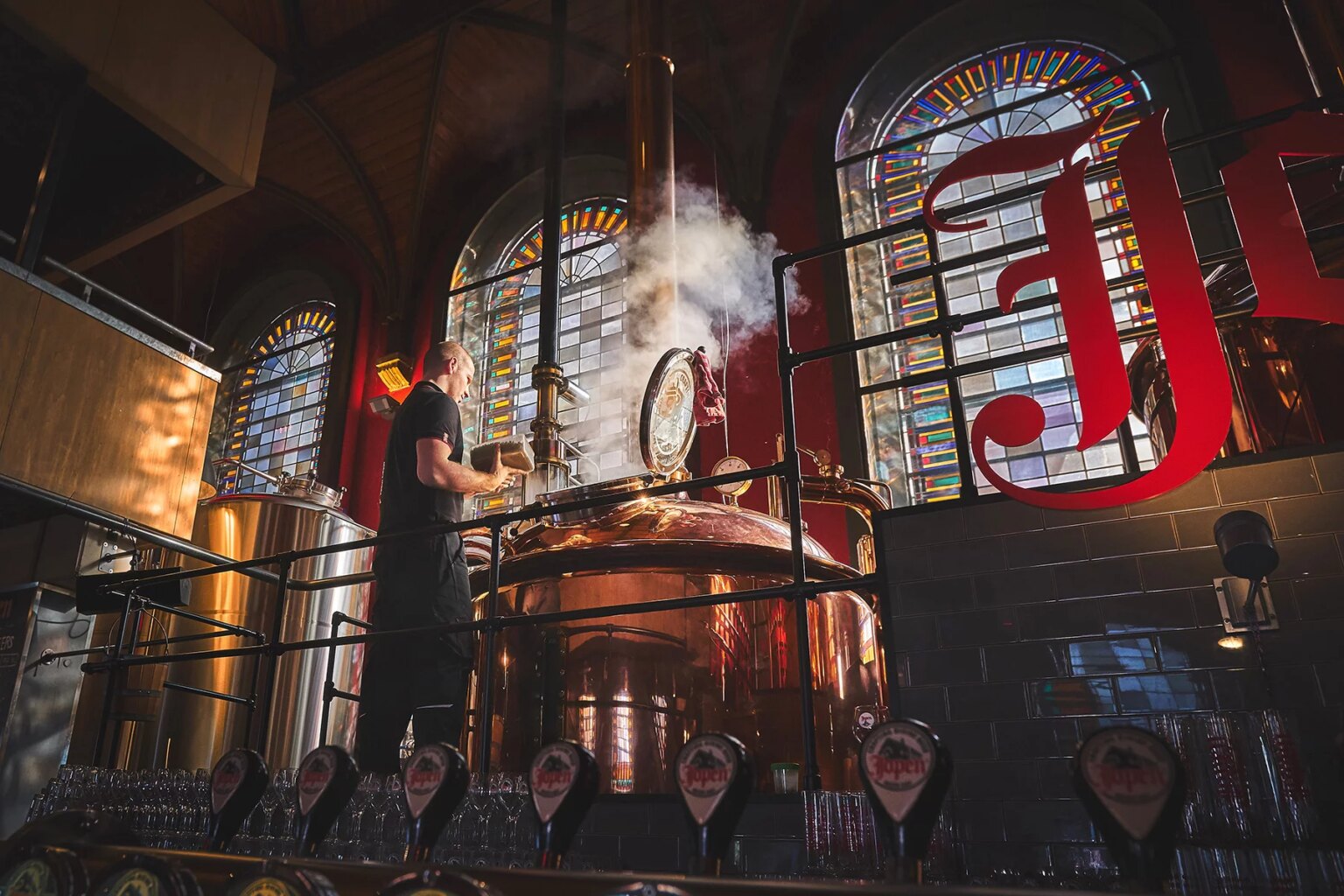What’s the first thing you think about Dutch-made food and drink? For many, it comes in an iconic green bottle, and it’s no wonder: the Netherlands is one of the foremost beer-producing countries in the world. Dutch beer isn’t just golden pilseners, though; there’s an entire world of styles available from the hundreds of breweries, both big and small, across the Netherlands.
This primer to the world of beer in the Netherlands covers everything you need to know, including topics such as:
Flink
Empty cupboards but no time to go shopping? Flink offers all your favorite supermarket products at supermarket prices, delivered directly to your door. Whatever you need – food items, toiletries, or stationery, get it delivered in minutes with Flink.
History of Dutch beer
Beer brewing in the Netherlands dates back well before the Middle Ages. In fact, British brewers incorporated hops into their production process when they discovered that Dutch beers used them. Traditional styles were heavy, dark, and almost medicinal. Gruit, a Dutch beer style relying on a herbal concoction for flavor, was drunk widely by the Dutch during the late Middle Ages and into the Dutch Golden Age. The emergence of the Dutch Republic as Europe’s foremost trading nation gave brewers access to ingredients foreign brewers could only dream of.
The Dutch Republic’s status as a naval power meant alcohol production in the country started to shift. Jenever, the antecedent to gin, increased in popularity during the Golden Age domestically and abroad. Dutch interest in beer waned as a result, with the Netherlands becoming a spirit-drinking nation.
The nineteenth century saw changes in the way the Dutch drank beer. Bavarian beer styles, which were crisp and light, were a welcome change to the heavy styles of yesteryear. Dutch beer boomed during the century, with Alfa, Amstel, Brand, Gulpener, Heineken, and Lindeboom all brewing their first beers. Breweries of the era emulated lighter Germanic styles such as Kölsch and Dortmunder. The Dutch penchant for pale lager beer lasted well into the twentieth century, as smaller breweries were vulnerable to a consolidating market. During the 1980s, the Netherlands was home to fewer than 15 breweries.
The Netherlands has come a long way from the days of being a pilsener desert. Dutch beer drinkers showed interest in lagers from smaller breweries as well as classic Belgian beers. Recent years saw an explosion of activity, with breweries popping up in every province and craft beer even beginning to dominate grocery store shelves. According to CBS, there were 605 breweries in the Netherlands in 2020.
Where do the Dutch drink their beer?
You’re never far away from a beer in the Netherlands. Any old café will have at least a couple of beers on tap (bieren van de tap in Dutch), even if they’re just industrially-made pilseners. The rapid ascendence of craft beer in the country, though, means that even restaurants and typical brown cafés are stocking up on locally-made beers. A typical café has anywhere between two and five beers available on draught; some specialist Dutch beer bars could have upwards of 40 beers on tap.

Drinkers from countries where large-format beers are the norm might be disappointed at first. If you’re ordering a pilsener at a Dutch café, you’ll usually see two sizes: fluitje (22cl) and vaasje (25cl). Asking for a pint is a great way to signal to the bartender that you’re not a local. Don’t fret, though; Dutch beer drinkers prefer these glasses because the beer stays cold and fresh. The smaller size also lends well to having a kopstoot (literally, a headbutt), which is a vaasje of pilsener alongside a glass of Dutch jenever.
While many Dutch breweries sell their beers at cafés or specialist beer bars, many breweries are also opening up their own on-site taprooms. Breweries in the Netherlands are usually in industrial districts, so they’re in more sparsely populated areas as a result (a great excuse to head there by bicycle). These breweries often have more space to spread out, so many host beer festivals in the summer such as the Borefts Beer Festival at Brouwerij de Molen.
Local Dutch beer styles
Although the Netherlands is known worldwide for its’ easy-drinking lager beers, there’s plenty of variety on offer at your local Dutch bottle shop. Here’s a trio of local Dutch beer styles to keep an eye out for.
Bokbier
Bock beers originally come from Germany, and they tend to be darker and strong in taste. The Dutch variants has a distinctly seasonal component, meaning that there’s two major releases of bock beers per year in the Netherlands. Creatively, the Dutch bocks refer to the season they’re produced for: the Lentebok (the spring bock) and the Herfstbok (the autumn bock). The Lentebok is the lighter and hoppier of the pair, though it’s still fairly malt-forward and tastes a bit like bread. Herfstboks are dark and malty, often featuring notes of toast and nuts.

Seasonal bocks are quite popular among Dutch beer drinkers. Most breweries (from tiny microbreweries to huge industrial breweries) release bocks seasonally, so don’t be surprised to see a glut of bocks on the shelves of your local Albert Heijn in the spring and autumn. Lenteboks are best served in a goblet, while herfstboks are suited well to a tulip glass.
A couple of common lenteboks are:
- Lentebok/Andre by De Prael (Amsterdam, Noord-Holland)
- Lentebock by Brouwerij Emelisse (Goes, Zeeland)
Some typical Dutch herfstbok beers include:
- Bock by Texels (Oudeschild, Noord-Holland)
- Eigenzinnige Herfstbok by BE+ER (Haarlemmermeer, Noord-Holland)
Gruit
The word ‘gruit’ refers to an herbal mixture that goes into a beer. Using gruit was a method for altering a beer’s flavor before brewers shifted towards hops. Common ingredients in historical Dutch gruit beers include bog myrtle, wild rosemary, and bay laurel.

Gruit producers are now few and far between, with only a handful of brewers trying this historical Dutch beer style. While some modern interpretations of gruit occasionally mix up the history of gruit with its’ hop-laden descendants, the idea of using spices and botanicals to imbue a beer with flavor is a key part of Dutch beer history.
A few modern takes on gruit include:
- Koyt Gruitbier by Jopen (Haarlem, Noord-Holland)
- Most Wonderful Time for a Beer by Uiltje Brewing Company (Haarlem, Noord-Holland)
- Weder by Nevel (Nijmegen, Gelderland)
Witbier
Originating in neighboring Belgium, the witbier (literally, white beer; sometimes called a Belgian white ale in English) uses unmalted wheat. Witbier is also a bit of a cultural reference to the gruit of old, as it incorporates coriander and orange peel. The end result is full of orange and vanilla with a finish that is both sweet and sour.

Witbiers typically come in one of two glasses: a tulip glass (as with many ales from Belgium) or a vase (as with witbier’s German cousin, the Hefeweizen). A critical part of serving a witbier properly is the setting; as the mercury rises in the summer, the more likely you are to see your neighbor’s enjoying a refreshing witbier on a sunny terrace.
Some of the best Dutch witbiers include:
- IJwit by Brouwerij ‘t IJ (Amsterdam, Noord-Holland)
- White Ale by Lowlander (Amsterdam, Noord-Holland)
- Witte Trappist by La Trappe (Berkel-Enschot, Limburg)
Dutch craft beer
Tradition in brewing isn’t the ultimate sign of quality for Dutch beer drinkers. As a result, breweries in the Netherlands feel unencumbered when it comes to how they brew. Where Czech or German beer is steeped in tradition, Dutch beer is renowned less for producing a limited number of styles well and more for experimenting with trends.
The Dutch beer industry has come a long way since 2010 when there were only about 70 breweries; while industrial producers loom large over the market, you’d be hard-pressed to find any café in the Netherlands that doesn’t have at least one independent craft offering.

As with other countries with a bubbling craft beer scene, IPAs are trendy despite reports to the contrary. Dutch breweries are no different, often throwing liberal amounts of hops into their brew kettles to the benefit of drinkers that like bitter beers. But for a country where growing hops is possible but uncommon, the Netherlands doesn’t have a sole focus on IPAs. Other popular beer styles with Dutch drinkers include imperial stouts, blonde beers, and beers brewed with wild fermentation.
A few of the most intriguing Dutch craft breweries are:
- Brouwerij De Molen (Bodegraven, Zuid-Holland)
- Butcher’s Tears (Amsterdam, Noord-Holland)
- De Moersleutel (Alkmaar, Noord-Holland)
- Nevel Artisan Ales (Nijmegen, Gelderland)
- Uiltje Brewing Company (Haarlem, Noord-Holland)
- Van Moll (Eindhoven, Noord-Brabant)
Beyond microbreweries, there’s a bustling homebrewing scene in the Netherlands as well. Brewing your own beer is legal as long as you don’t sell it. There isn’t a massive variety of homebrewing supply stores in the Netherlands, but the ones that exist have extensive offerings; Braumarkt in Almere is one such example. Homebrewing groups (such as Foebar in Amsterdam) are also available for homebrewers looking to share tips and tipples in a more social environment.
The most popular Dutch beer brands
The Netherlands is home to some of the biggest brands in beer. Most popular Dutch beers are fairly standard pilseners, which are bubbly, golden, and a little bitter on the tongue. The Netherlands is home to Heineken, arguably the world’s most well-known pilsener beer and is still brewed in Zoeterwoude.

Dutch pilseners are usually sold in 33-centiliter glass bottles (which have a refundable deposit [Statiegeld] of €0.10), although cans are more prevalent at grocery stores in train stations. Half-liter bottles are rare and generally imported; larger bottles (e.g., 75 centiliters) are common for sour beer styles like lambics.
The more popular Dutch beer brands include:







